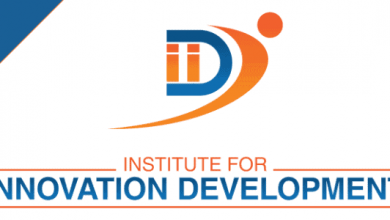Gen Z’s American Dream: Why Old Financial Rules Fail and How to Win Anyway


To make Wealthtender free for readers, we earn money from advertisers, including financial professionals and firms that pay to be featured. This creates a conflict of interest when we favor their promotion over others. Read our editorial policy and terms of service to learn more. Wealthtender is not a client of these financial services providers.
➡️ Find a Local Advisor | 🎯 Find a Specialist Advisor
Gen Z’s Update to Their Parents’ Playbook Turns Small Wins into Lasting Wealth
Scroll through social media and you’ll find a flood of financial bad news, not to say doom and gloom, when it comes to Gen Z.
According to Newsweek, for example, “Step, a modern financial platform designed for Gen Z, surveyed 1,500 respondents… The survey reported that 41% run out of money nearly every month, and only 22% consider themselves to be financially stable.”
The “Squeezed Generation” Narrative
The bad news usually headlines three things:
- Crushing student debt.
- Tough job markets.
- Unaffordable houses.
The message is clear and pervasive.
The system is broken, even rigged, keeping today’s young adults from matching, let alone exceeding, the financial achievements of their parents and grandparents.
I touched on this in a previous article, eliciting several comments, including an interesting back-and-forth with James Bellerjeau, who dismissed such claims as, to put it bluntly, clueless whining.
That exchange intrigued me, leading me to research the situation more in-depth.
Has Gen Z truly gotten such a raw deal? Is their financial life so much worse than Boomers, Gen X, or Millennials faced at the same age?
What I found was eye-opening. It turns out that in their day-to-day budget, Gen Z spends less on the largest line items than prior generations did, when scaling to the median income of each relevant period.
However, this doesn’t mean their complaints are baseless.
They do face real obstacles when reaching for the first rungs of “the American Dream ladder.”
- Earning a college degree without crippling debt.
- Landing a career in their chosen field.
- Buying a first home.
For Boomers, a college education and starter homes were far more affordable. However, their day-to-day budgets were tighter.
Gen Z faces the opposite challenge. They need to take advantage of their relatively more affordable daily life. To “make it,” they need to be more strategic with their choices.
Metaphoric brute force won’t cut it.
Gen Z’s Very Real Challenges
Reaching for traditional life-milestone ladder rungs, Gen Z faces a much higher bar to success than Boomers, Gen X’ers, or even Millennials did. As mentioned above, three stand out.
Getting a College Degree
A crucial first rung of the “successful life” ladder, a college degree is widely understood to lead to higher lifetime income. That’s why it’s no surprise that research.com reports that 2 in 3 high school graduates immediately enroll in college, with more joining after a gap year.
However, the cost of a 4-year degree is now dramatically higher (in multiples of the median household income, Fig. 1) than it was in the 1960s and 1970s. Back then, a degree would cost about 60% of the median household income. By the mid-2010s, it peaked at triple that (!), and recent numbers are still over 140% of the median income, or 2.3× what Boomers faced.
This dramatically reduced college affordability often leads to crushing levels of student loan debt (Fed data show that nearly half of those who pursued a four-year degree owe over $25k) that take years, if not decades, to pay off.
When my kids went to college, their full cost of attendance varied from a low of less than 25% of our annual income to a high of 125%. One of my former coaching clients finished a Master’s program with a combined student loan debt of more than $360k! While an extreme example, it is illustrative of how bad things get.
Fig. 1. Cost of a (nominally) 4-year degree in multiples of median household income from 1964 to 2025.
Buying a Home
If anything defines the American Dream, it’s owning your home. But that dream is harder than ever to achieve.
In 1964, when the first Boomers turned 18, the median home cost (Fig. 2) was 4.9× the median household income. This decreased to a low of 3.4× in 1998.
Then, things became tougher. By 2006, the median house cost ratio was over 5.6. Following the subprime mortgage crisis of 2007-2008, prices plummeted, pushing the ratio under 4, but qualifying for a mortgage was much harder, so many would-be first-time homebuyers were locked out of the market. Recently, the ratio climbed back to its 5.6× peak.
My own experience was better. Our ratio for three houses ranged from 2.2× to 3.9×, all on the lower side of the historical range.
Today’s historically high cost ratio, with a national average 30-year fixed mortgage rate of 6.8%, higher than 2006’s 6.4% and more than double the sub-3% of a few years ago, pushes housing affordability to its lowest point in decades.
Some relief is on the horizon, since the housing market is more balanced than it has been for a long time, the Fed just started cutting interest rates, and Gen Z’ers are expected to inherit an average of $216k by 2048 (more on this below).
Still, the reality is that most Gen Z’ers won’t be able to afford a first home until they’re much older than previous generations were at that milestone.
Fig. 2. The median home price in multiples of median household income from 1964 to 2025 based on Yale economist Robert Shiller’s housing cost data and the median household income.
Entering the Workforce
According to Recruitonomics, 52% of college graduates are unemployed or underemployed (e.g., working at a job that doesn’t require a college degree and/or isn’t in their chosen profession) a year after graduating. By five years post-graduation, this drops slightly, to 45%, where it stays at least until 10 years post-graduation.
Considering the heavy financial and non-financial burdens undertaken by students, many come to regret that choice. Even computer science grads, who for many years could count on robust hiring and high salaries, now face hiring freezes, layoffs, and shrinking pay.
The takeaway here is that the first few rungs in the ladder are far more difficult to reach.
The Good News: Day-to-Day Expenses Are Relatively Lower
Countervailing the high cost of these lifecycle goals, Gen Z’s costs for major household budget categories went in the opposite direction when scaled to median incomes.
You Have to Live Somewhere
Setting aside homeownership, shelter, comprising over 35% of the average household budget, has consistently been between 20% and 25% of median household income from 1964 to date (Fig. 3). The 2025 reading of 23.2% is near the middle of that range, so paying for day-to-day housing isn’t more difficult.
Fig. 3. Changes in spending on shelter as a fraction of median household income, based on the YoY CPI-U shelter inflation data, the current average rent according to Zillow, and the median household income.
You’ve Got to Eat
Spending on food, at more than 13.6% of household budget, actually decreased (Fig. 4), from over 12% of median income in 1964 to 8% in 2025.
Fig. 4. Changes in spending on food as a fraction of median household income, based on Fed data on household spending on food and median household income.
Getting from Point A to Point B
In 1964, Boomers spent, on average, 17% of the median household income on transportation (Fig. 5). By 2025, this fraction decreased by nearly half, to 9%! With transportation comprising over 13% of the average household budget, that’s a big win for Gen Z’ers’ budgets!
Fig. 5. Changes in transportation spending as a fraction of median household income, based on Fed data on household transportation spending and median household income.
Try to Avoid Getting Sick
It’s widely known that healthcare inflation outpaced overall inflation for many years. Has average healthcare spending, contributing over 8% to the average household budget, jumped higher since 1964 as a result? The data (Fig. 6) say yes. The ratio grew from 3.4% of median household income in 1964 to a peak of 6.0% in 2011, before dropping somewhat to 4.9% in 2025. However, while this is a 44% relative increase from 1964 to 2025, it barely moves the needle, with avera
Fig. 6. Changes in healthcare spending as a fraction of median household income, based on OfficialData.org healthcare inflation data and median household income.
The Takeaway Gives Hope
Compared to Boomers, Gen X’ers, and Millennials, Gen Z’s spends less on the largest budget categories of day-to-day essentials like shelter, food, transportation, and healthcare!
This gives Gen Z a much-needed budget cushion to save more for big-ticket lifecycle items like a first home.
The Disconnect: Easier Budgets, But Tougher Milestones
Yes, the dominant narrative says that Gen Z has it worse.
However, the data show they spend a smaller proportion of the median household income on basics like shelter, food, and transportation.
Why the disconnect?
While everyday affordability is more manageable, long-term upward mobility, in the form of higher education, career, and homeownership, is far less achievable than before.
Keeping up with bills is easier, but the American Dream requires more than just finishing the month before your money runs out. It requires those important early milestones: a college degree, a career that builds on your education and pays enough to save and invest for the future, and becoming a homeowner.
With most mortgages fixed-rate with tax-deductible interest, buying a home keeps your shelter costs stable and your equity builds up, a form of forced savings.
For Gen Z, each of these early rungs on the American Dream ladder is higher than before. That’s why so many Gen Z’ers feel stuck at the bottom, despite more (relatively) affordable basics.
Viral TikToks of sky-high student loan debt, being unemployed or under-employed for years after graduation, and ever-less-affordable mortgages, make the disaffection of these young adults more understandable.
Stalled Mobility
While daily expenses are more affordable, it’s climbing the wealth ladder that brings contentment.
Despite paying more for the basics, Boomers and Gen X’ers faced better job prospects, didn’t need student loans, and found homes more affordable.
Many Gen Z’ers, on the other hand, have to take on crushing student-loan debt and have a hard time landing a decent job in their chosen field, which sets their homeownership dreams back by years or decades.
Worse, these delays compound: pay rent rather than build equity in a home, pay back student loans instead of investing for the future, and spend years unemployed or under-employed, all of which stall upward mobility.
However, this doesn’t mean that upward mobility is impossible.
It just means they have to replace the old playbook that worked well for their parents and grandparents. They can’t simply work harder and trust the system.
They need to be more strategic, using the lower relative cost of the basics to save and invest aggressively, turning a budgetary breathing room into long-term wealth and success.
Don’t Count on It, But There is a Lifeline Coming
While those first few rungs are harder to reach, there’s an unprecedented wave of wealth transfer underway.
As I wrote in an earlier article, “A new Harris poll quotes a projection from industry research firm Cerulli Associates, estimating that by 2048, a staggering $124 trillion in personal assets will change hands.”
While Gen Z stands to gain the least compared to earlier generations, by 2048, they’re still looking at an average inheritance of $216k!
This can be a huge boost to paying off high-interest debt, providing a down payment on a house, and even boosting investments, making up for those harder-to-reach initial rungs.
Still, this isn’t a blanket statement that all Gen Z’ers can count on.
That $216k is an average number. Many will no doubt have no inheritance, while others will benefit from larger ones. And even those who do inherit might fritter it away on things that don’t improve their finances, leaving them with higher lifestyle costs they can no longer afford once the bequest runs out.
However, there is something you can count on, or, rather, someone.
You.
What to Do: Turn Today’s Challenges into a Better Future
The unfortunate reality is that you can’t afford to sit and wait for an inheritance to rescue you.
As they say, “Hope is not a plan.”
Step 0: Kill Your High-Interest Debt Before It Kills You (r Finances)
If increasing income and investments are rungs on the wealth ladder, high-interest debt is the chute that sends you down, wiping out years’ worth of wealth.
Few things give you a higher guaranteed return than paying off high-interest credit card debt. Student loans with relatively high interest rates, say 8% or more, fall just below that priority.
Explore options such as getting support from your employer in paying off student debt, income-based repayment plans, or even taking on a part-time job or gig to bring in the extra cash you need to kill that debilitating debt.
Step 1: Start However Small You Must, but Start Now
Especially if your income is low due to under-employment, you can’t realistically set aside 15%, let alone 30% to over 50% as some adherents of FIRE (Financial Independence, Retire Early) advise.
So start wherever you are.
Can you set aside 10%? Great!
No? Try 5%, or even 2%.
The crucial thing is to start right away, creating a “saving and investing” habit early, giving your investments more time to compound.
Once you start, anytime you get a raise, bonus, or cash gift, direct half to two-thirds to your investment portfolio.
Don’t make it 100% though.
That’s unsustainable, and you want to maintain a balance between investing for the future and enjoying the present. After all, none of us is promised tomorrow, let alone the next 40-50 years.
The great thing about this method is that even if you start at 2%, over time, your savings rate will eclipse the 30% that you can’t reach today.
All that, without ever feeling deprived, because you’re allowing yourself some lifestyle improvement while saving more. Just don’t let lifestyle creep eat up all of your new money.
Step 2: Buying a House the Strategic Way
Instead of pushing your finances to the max to try to come up with a down payment and somehow afford a monthly mortgage payment, ensuring you’ll be house-poor, step back for a bit.
Use the time to build up your savings and investments, biding your time until (a) you have enough saved up and a high enough income, (b) the housing market cools down a bit, and (c) mortgage rates are more favorable.
That’s when you’ll have the resources to afford the house you want, rather than run yourself ragged trying to afford any house, even if it’s not what or where you really want.
Another hack is so-called geo-arbitrage.
Try to find a remote job that pays Silicon Valley wages but lets you live in a much lower-cost area, and you’ll have the best of both worlds: a high income and more affordable housing.
Step 3: Build Career Resilience
If you’re one of the unfortunate Gen Z’ers who can’t find a well-paying job in your chosen field despite having a degree, it’s time to go the extra mile.
Figure out what skills are in rising demand in your preferred field and pursue them. This could be through paid (if you can) or unpaid (if you must) internships, certifications that don’t require more years of school, or side projects that prove to prospective employers that you’re self-motivated.
If the field of your degree is dying (or dead already), possibly due to the exponential growth of AI applications, pivot to a different career that still pays well and is at least somewhat interesting to you, but that’s growing rather than shrinking.
Doing this will boost your income, shortening your path to those critical first few rungs.
Nobody can deny that Gen Z faces very real financial challenges. However, some things are up to you. You can’t use your parents’ old strategies, but there are new ones that can help make your American Dream achievable.
Ryan Nelson, founder of Alchemy Wealth Management, summarizes, “Gen Z faces a steep cost of higher education, delayed career matching, and historically high home price-to-income ratios, which combine to slow their ability to build wealth. To overcome these, start saving and investing at whatever level you can, automate increases from raises and bonuses, focus on building in-demand skills, and time major purchases like housing strategically instead of rushing in. Wealth is built through consistency and time, not perfect timing. Even small amounts saved early compound into meaningful results, and a simple plan you stick with always beats a complex one you abandon.”
Advice from Financial Pros
Cecil Staton, Founder of Arch Financial Planning, lists Gen Z’s challenges: “Gen Z is entering the workforce at a time when the costs of living, housing, and education have grown far faster than wages. Many industries and jobs will undergo rapid changes due to advancements in AI and technology. These headwinds create uncertainty and challenges when saving for retirement.”
Asked for his best advice to Gen Z, Dr. Steven Crane, Founder of Financial Legacy Builders, says, “Think of one word…unpredictability. The days of working for the same company for 30 years are gone. Gen Z can’t rely on linear career paths, so remaining flexible is more important than ever.
“Define what success means for your life beyond a career and find purpose outside of a paycheck. Knowing that everyone’s career path is going to be unique invites a certain level of freedom, as you get to decide what success looks like for you and your life.
“The best investment anyone can make is in themselves. Focus on becoming a person of value; building and stacking skills, and taking care of yourself and your health is probably one of the most valuable things you can do in your 20s.”
Ben Simerly, Financial Advisor and Founder, Lakehouse Family Wealth, elaborates, “The two biggest challenges for Gen Z are a far longer life expectancy after retirement age and the dramatic growth in spending, instead of savings.
“Depending on the field of work and area of the country, the average retirement used to be as short as seven years. Now, Gen Z may experience retirements as long as 40+ years. This means they need to save dramatically more for retirement than prior generations. It also means they must structure their retirement savings based on investment growth rather than spending down savings.
“On the spending side, households tend to spend far more now on discretionary spending outside core needs such as basic food and minimalistic housing. In my work with clients in debt, we’ve jokingly coined the term STA Syndrome, for overspending at Starbucks, Target, and Amazon. When we evaluate client spending habits, we very often find that if they cut back their discretionary spending, their income can easily cover both their immediate needs and retirement savings.
“The biggest growth hack for Gen Z is to take advantage of time, or, more specifically, the time value of money. With medical advancements, Gen Z will have more time to both live and earn income than any previous generation in history.
“While they need to save more, they also have more time for their money to grow. Very often, far more can be earned through the time value of money than through income or cash savings. This is the number one edge Gen Z has in their fight for a real retirement.
“The biggest tip I can give Gen Z in running their financial lives is to surround themselves with people who value their health, spending quality time with others, and saving money. This will make it easier for them to do the same. Pursuing these values rather than over-consumption improves your quality of life and increases your wealth. One of the best-kept secrets of any millionaire next door is that what makes you happiest, like spending quality time with your family, often costs little to no money.”
The Bottom Line
Despite the widely spread narrative that Gen Z is financially doomed, the truth isn’t so stark.
The key takeaway is that getting a college degree without crushing student-loan debt, building a highly compensated and rewarding career, and buying a first home are all more challenging for today’s young adults, so reaching the first rungs of the “American Dream ladder” is harder.
This is why Gen Z sees their financial reality as mostly doom and gloom, with major life goals seeming to slip further and further away.
However, while the old strategy of working harder that served previous generations isn’t suited to today’s environment, a more nuanced one is.
The affordability of day-to-day living, scaled to the median household income, is better now than it was for prior generations in their early adulthood. This is notwithstanding the decades-long record inflation we saw a few years ago, now that year-on-year CPI-U inflation has subsided to under 3% since June 2024.
In short, the ladder’s first few rungs may be higher up, but the floor isn’t as slippery.
Combining the greater challenges of achieving major financial life goals with improved day-to-day affordability, Gen Z have more short-term breathing room to pay off high-interest debt, as well as save and invest toward their (currently more expensive) major goals.
One relatively painless way to implement this strategy is to start at whatever savings rate you can, and then direct half to two-thirds of any new money (bonus, cash gift, and especially raises) to bolster your savings rate.
Meanwhile, bide your time while renting until (a) mortgage rates drop, the housing market cools down, and your portfolio grows enough to cover a down payment on a home you’d want to live in.
On the career front, be strategic about gaining in-demand skills and networking to achieve career resilience.
Finally, even if you expect to inherit a nice chunk of change in the coming years, don’t count on it to save you. You should only count on one person – the one you see each morning in your mirror.
In short, the American Dream isn’t dead. Gen Z can still make it; it just requires different strategies than those that worked before.
Disclaimer: This article is intended for informational purposes only, and should not be considered financial advice. You should consult a financial professional before making any major financial decisions.
About the Author
Opher Ganel, Ph.D.
My career has had many unpredictable twists and turns. A MSc in theoretical physics, PhD in experimental high-energy physics, postdoc in particle detector R&D, research position in experimental cosmic-ray physics (including a couple of visits to Antarctica), a brief stint at a small engineering services company supporting NASA, followed by starting my own small consulting practice supporting NASA projects and programs. Along the way, I started other micro businesses and helped my wife start and grow her own Marriage and Family Therapy practice. Now, I use all these experiences to also offer financial strategy services to help independent professionals achieve their personal and business finance goals. Connect with me on my own site: OpherGanel.com and/or follow my Medium publication: medium.com/financial-strategy/.




